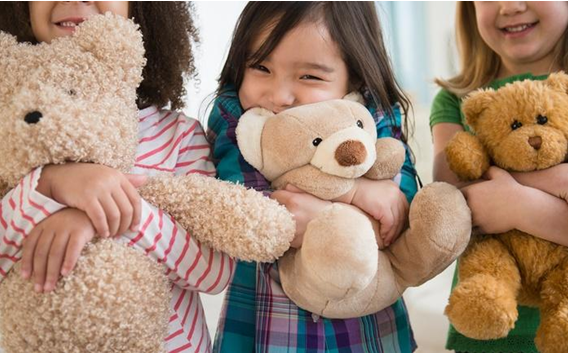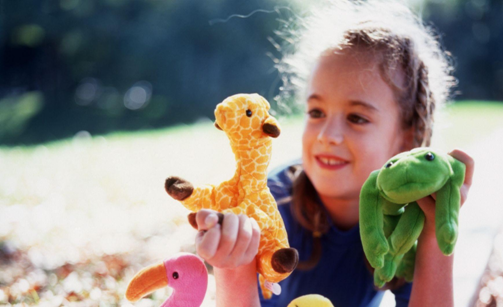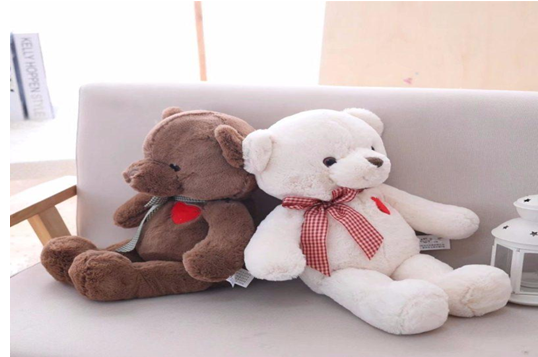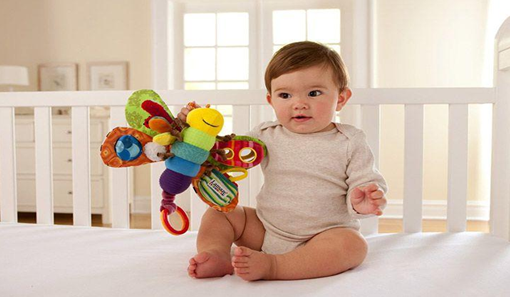What are stuffed plush toys
Published :
02/17/2020 08:24:57
Categories :
Advice from psychologists on raising a child
, List of all pediatricians by city
, Video tips from pediatricians
We buy soft plush toys for our kids and give it to them to play with. We do it to show them our love and help them get to know the world around them.
When the children grow up, they choose their own favourite toy and quite often they stay with it until they are teenagers and no longer need a teddy bear, bunny, or tiger to fall asleep every night.
With toys, our children’s childhood passes by happily and we love to surprise them with new soft toys on occasion and even without occasion. But have you ever questioned about what the stuffed plush toys are and whether their stuffing is completely safe? If you have been wondering what materials are used to stuff the stuffed toys you buy for your children, stay tuned to find out.
What fillers are used in stuffed toys?
The materials used for stuffing soft toys can be divided into natural and synthetic ones.
The most commonly used natural materials are the following:
● cotton
● wool
● herbs
● sawdust
● So-called "bulking agents" (cereals, seeds or husks of different cereals)
Synthetic stuffers for plush toys are usually the following:
● synthetic winterizer
● holofiber (synthetic down)
● polyurethane foam
● plastic pellets and other synthetic materials
Pros and cons of filling with natural materials
Cotton
Cotton or cotton wool is a very affordable and inexpensive material, which is why plush toys filled with it are quite cheap. And with that, the benefits of cotton stuffing end.
Why?
● To obtain the shape that the soft toy should adopt, the cotton (cotton wool) should be placed very tightly, which makes the toy heavier and more uncomfortable for children.
● Washing plush toys with cotton stuffing is difficult and loses its shape after wash and the stuffing sticks.
● Cotton has the ability to absorb moisture, which can eventually cause rot or mould to form inside the toy.
Wool
The benefits of wool filler is that it does not absorb moisture and is a much softer material than cotton wool. While this stuffing is safer than cotton, it has many drawbacks, including:
● May cause allergic reactions in some children. Therefore, it is advised to check the children’s allergy to wool before buying a stuffed wool toy.
● Wool stuffed toys should not be washed. If they need to be washed, they should only be hand-washed once or twice a year with extreme care since the toy loses it shape while washing.
Bulk fillers
This type of stuffing usually includes different types of cereals such as lentils, beans, and others, seeds, and flakes of seeds and sometimes even small pebbles, salt, etc. Bulk stuffers for plush toys are among the preferred by toy manufacturers as they are safer for children and reduce stress.
Among the main advantages of bulking agents are:
● Do not cause allergies.
● Develop the fine motor skills of children.
● They are very pleasant to the touch and can take different shapes.
The disadvantages of this type of filling are:
● Before being stuffed in a toy, they must be sorted and properly treated to be completely safe for children.
● When volume of cartridges are used, they are placed in separate bags and the toy is filled with other softer materials to make it soft and comfortable to play with.
● Toys filled with this material cannot be washed as moisture destroys the fillers.
Sawdust
Strangely enough, sawdust is often used to stuff teddy bears. This material is very pleasant to the touch, environmentally friendly, and does not cause any allergies.
The downsides of sawdust stuffing are that plush toys filled with it cannot be washed in any way. In addition, toys with this type of stuffing are a little heavier and more flammable.
Special herbs and flowers
This stuffing is mostly used for stuffing pillows and very rarely for plush toys, but still, the likelihood of encountering a soft toy stuffed with herbs is not rare. The herbs that manufacturers use for this type of filling are lavender, jasmine, chamomile, thyme, and other herbs and flowers that have a calming and relaxing effect.
Usually toys that use herbs as fillers have a zipper so that when the toy has to be washed, the stuffing can be removed.
A disadvantage of this filler is that overtime the herbs loses their aroma and the filling must be replaced.
Pros and cons of synthetic material filler
Sintepon
One of the most commonly used synthetic materials for stuffing stuffed toys in recent years is synthetic winterizer. This filling is a type of synthetic non-woven fabric. Its fibres are made of polyester raw materials, which are twisted as filaments and interconnected in various ways.
The advantages of sintepon fillers are:
● It is hypoallergenic.
● It does not lose its shape after washing.
● It is extremely durable.
Sintepon-stuffed plush toys retain their original shape for years.
Holofiber
Holofiber is one of the modern synthetic fillers that is used both for stuffing jackets, pillows, and mattresses, and stuffing stuffed toys. Basically, holofiber is a type of synthetic material that is made from polyester fibres. These fibres are heat-treated and their melted particles clump together to form an elastic, light mass in the form of small synthetic balls.
The advantages of this type of stuffed toy are:
● It does not absorb moisture and odours.
● It does not cause any allergies.
● It is hypoallergenic and does not allow mites, bacteria, or fungi to appear in toys which would affect the children's health.
● Holofiber-filled toys can be easily washed even in a washing machine, dry quickly, and do not lose their shape.
● The filler is of high quality and high durability, but this does effect the pricing of the toys.
The disadvantage of this filler is that, it is still a product made from recyclable materials.
Polyurethane foam
Of all the synthetic fillers that we have introduced to you here, there seems to be the most controversial opinions about polyurethane foam fillers:
●On one hand, it is soft, hypoallergenic and plush toys stuffed with it can be laundered without any problem.
● On the other hand, memory foam is harder to fill in toys and breaks down over time.
However, if you seek our advice, we vote in favour of polyurethane foam because, even though the filling is not only extremely soft, the toys filled with it do not lose their shape. As soon as the child squeezes and releases the toy, it immediately returns to its original shape.
Plastic pellets
Plastic pellets are very widely used for stuffing knitted and plush stuffed toys. The pellets are small, plastic balls that give the plush toys the necessary weight and stability.
Toys filled with this type of stuffing:
● are very pleasant to touch.
● can be washed repeatedly without losing their shape.
● there is no danger of children developing any type of allergy since pellets are hypoallergenic material.
This stuffing is used for stuffing stuffed toys, both by mothers and grandmothers who want to make toys for their children and grandchildren themselves, and also by most toy manufacturers. And the reason they use plastic pellets is that, the stuffing:
● can be purchased in different sizes and cuts.
● is not expensive.
● qualities are very good.
We have briefly introduced you the basic materials used for stuffing stuffed toys and we are sure that next time you buy soft toys, you will pay special attention to their stuffing.
However, if you allow us, we would advise you the following:
● If you need to choose between a natural or synthetic material fill, consider a synthetic filler. We tell you this because synthetic fillers are hypoallergenic, do not absorb moisture or odours and toys filled with them can be easily washed.
● And since you are buying a stuffed toy for your child, in addition to the stuffing, look for information about the material used to make the toy.
● Make sure that the soft toy you buy and give your child has passed all the necessary safety tests and holds a quality certificate.
● Before purchase, also make sure that the seams of the plush toy are strong and proper, that the plush animal's eyes are secured or glued firmly, and that the toy has a label clearly indicating what age it is intended for, if it can be washed, and who the manufacturer is.
And something else…
If you care about your child's safety and the high quality of the soft toy that you will buy, avoid buying toys which you are not entirely sure of its origin. If you have the opportunity, buy toys only from specialist children's stores that work with leading manufacturers of toys.
Not only will you be assured that the toys will be completely safe, but the stuffing they are filled with will be of high quality and perfectly suited for the intense games that your child will subject the toy to in the coming months and even years.






 Back
Back